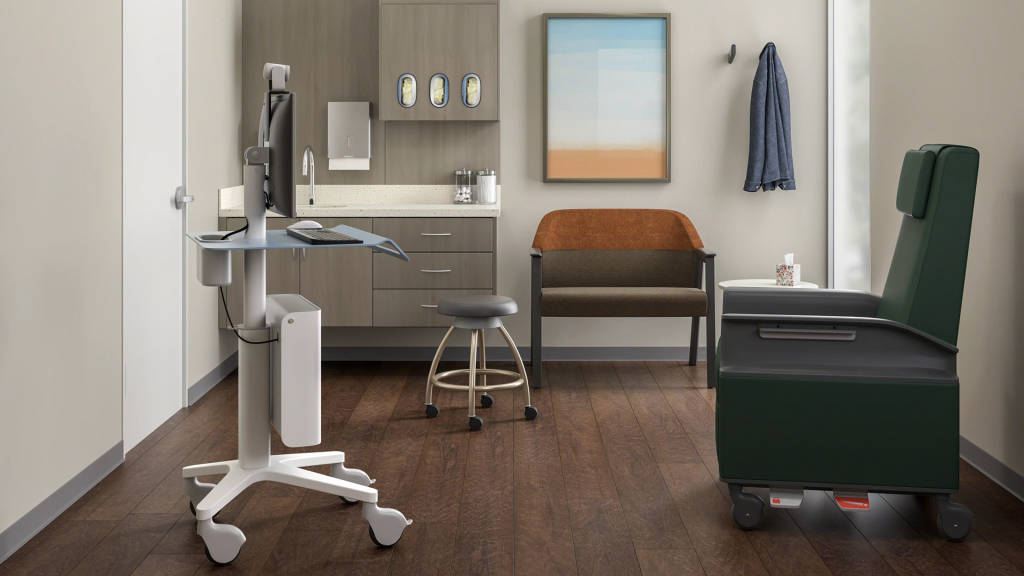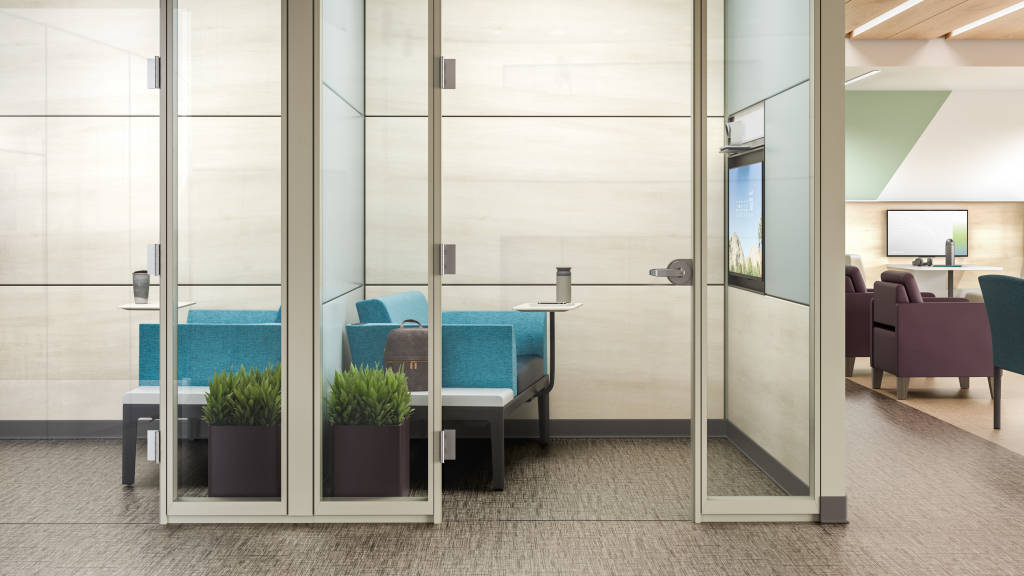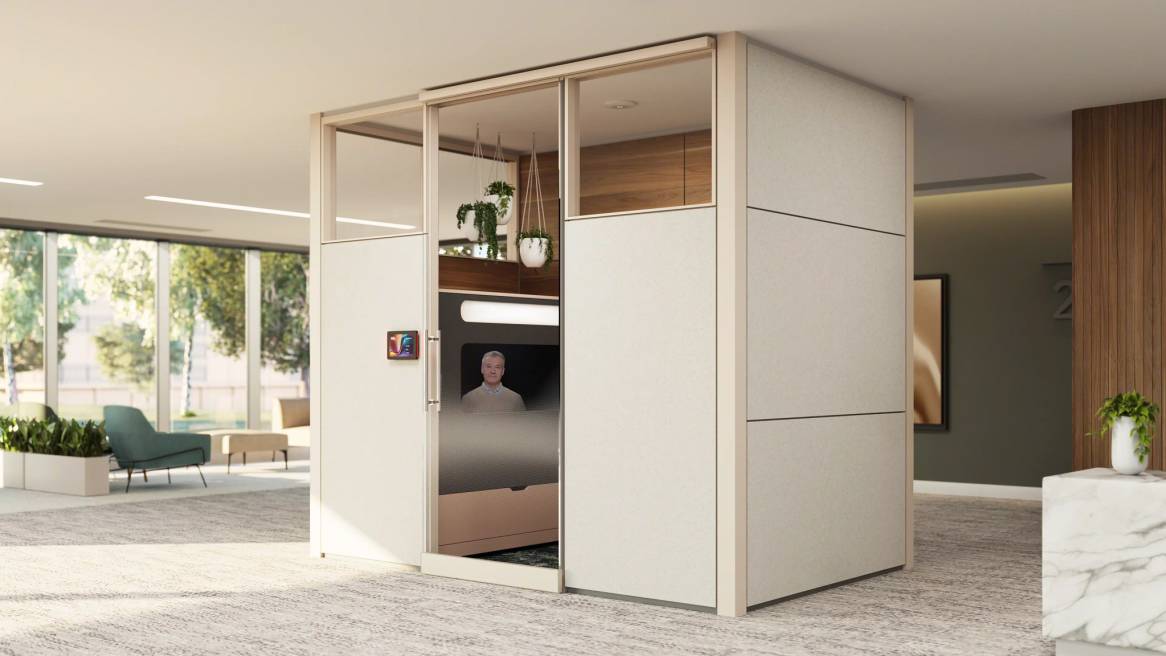Effective Webside Manner: What Does it Take?
Even when healthcare is delivered virtually, space still matters
Healthcare is personal and intimate. The relationship between patients, families, and clinicians requires trust, clear communication, and accurate assessments, which is why it has long been practiced face-to-face and in person. Yet, as medical professionals have responded to a global pandemic and changing needs, many organizations have fast-tracked plans for virtual care, which allows them to treat more people while keeping clinicians and patients safe.
This shift is not new, but it is accelerating. Patients, accustomed to doing all sorts of activities from shopping to banking on their phones, have already started to develop an appreciation for the convenience of virtual care. At the same time, healthcare administrators face mounting pressure to advance the Quadruple Aim: improve population health, deliver better patient experiences, manage costs and improve clinician experiences – factors that all point toward opportunities virtual care can support.
As a result, “webside manner” (the virtual equivalent of bedside manner) is a key capability for clinicians and health systems to develop. Before this global pandemic, virtual care was growing as a way to deliver accessible and convenient care. In fact, according to the results of a 2018 Deloitte survey, almost 25% of U.S. consumers have already had a virtual healthcare appointment, a strong indication that it’s quickly becoming mainstream. Now, more than ever, health systems need the ability to triage large numbers of people remotely and only bring in those who are experiencing the worst symptoms.
Technology is just the beginning
Developing and delivering an effective webside manner requires a lot more thought than just putting a webcam and some random furniture in an unused space that might feel like a broom closet. That’s why Seth Starner, Steelcase Health Advanced Explorations leader, and Jordan Smith, WorkSpace Futures design researcher, has been studying technology-enabled care closely for more than a year.
Here’s what was found: Of course, clinicians need a good internet connection and a quality webcam to do it right. But other essentials are often overlooked. Behaviors such as fidgeting, eye shifts and facial expressions may not be noticed during an in-person exam, but all get magnified onscreen and can be very off-putting to patients receiving virtual care.
Although virtual care gets transmitted via cyberspace, the physical healthcare space where participants are located is an important consideration — for both the patient and the clinician. Steelcase researchers uncovered compromising situations where spatial limitations presented very real obstacles to effective virtual care:
- A weekend camping adventure has produced an alarming rash. Poison ivy? Swimmer’s itch? Tick bite? You’re not sure. But you have important meetings at work that you don’t want to miss. So, you schedule a virtual care appointment to occur during a break in your busy day. Where will it happen? You know the doctor will want to see the rash. But the privacy enclaves at the office all have glass walls, and you sure don’t want to be Skyping with your doctor from inside a bathroom stall. You end up retreating to your car, the only place you can be sure of the visual and auditory privacy you need to make this an effective exam.
- You’re a clinician providing virtual care several days a week from home. You appreciate not always having to commute and getting away from the intensity of the clinic. You’ve been provided with a high-quality webcam, and you’ve moved a table and chair into the den. However, the lighting there makes you look washed out – exhausted even — and camera shifts show your kids’ toys in the background. Your patients, who have never met you before, feel uneasy about what they’re seeing and wonder if you’re really a professional they can trust.

To avoid scenarios like these, Steelcase Health researchers offer the following guidelines for creating effective, appealing spatial solutions for virtual care:
Be user-centered
Focus first on the needs of people; never let technology pre-empt human considerations.
Be consistent
Optimize the background, lighting and acoustics to present the clinician well. Provide visual cues — furnishings, backgrounds, work-appropriate attire, etc., that signal an extension of the quality people have come to expect in your brick-and-mortar facilities.
Make it versatile
Optimize the allotted space by making sure it can accommodate other work modes, too — documentation, focused work, one-on-one collaboration and rejuvenation, for example.
Make it convertible
Requirements can change quickly. Adaptable settings support different activities in different places as needed. For example, modular office walls and mobile furnishings are easily reconfigured on demand, and certain pods are quick to install. Modular spaces can act as freestanding meeting rooms with a refined aesthetic that offers a and high level of privacy.
.

No question, the foray into virtual care can be daunting. But done right, it can make care more accessible and convenient. That’s good news for healthcare professionals, patients and employers who want to help their employees and families stay healthy with fewer hassles and downtime.
At Steelcase Health, we’re working to support the technological evolution of healthcare experiences by helping systems and providers optimize webside manner and meeting a range of virtual care needs.
.
Insights in Action
While healthcare spaces continue to evolve, it’s evident that virtual care is here to stay. Explore our insights on how to design flexible and comfortable, in-person and hybrid healthcare environments.


